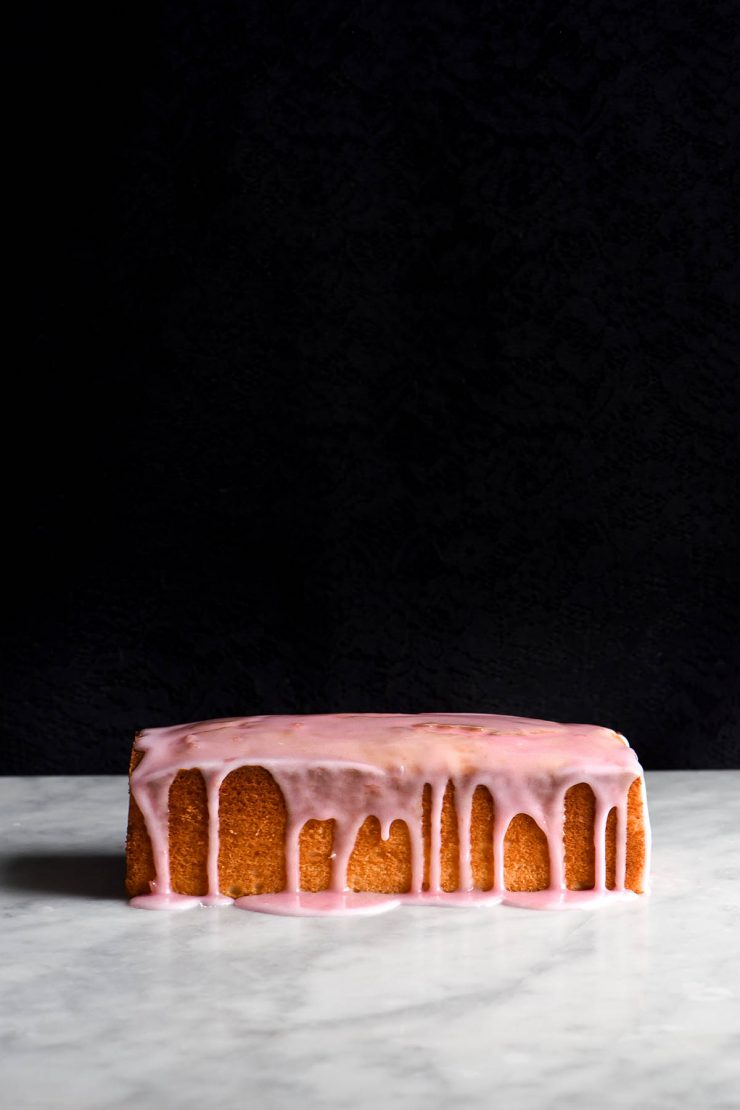
Last year I posted my easiest ever chocolate cake recipe. I had intended to follow it up quickly with a vanilla version, but life had other plans (namely: a new cookbook!) So, about a year later, the second instalment: this easy gluten-free vanilla cake.
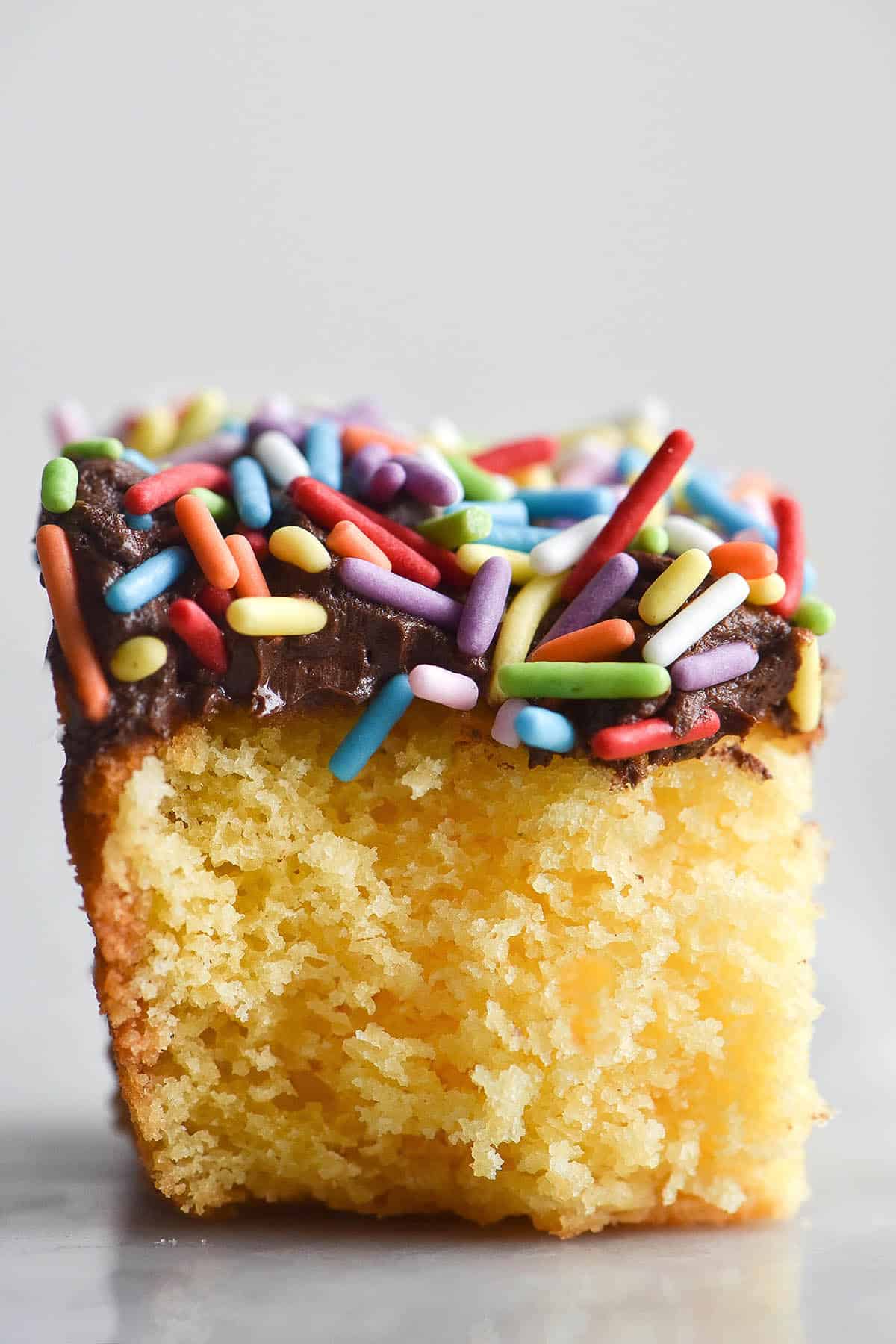
Easy gluten-free vanilla cake without xanthan gum
This gluten free vanilla cake not be any easier. I would have called it the easiest ever, but I’ve since decided I’m not a fan of those grandiose recipe titles. As easy as it is, it’s equally as dietary niche friendly. This cake contains no nuts, dairy or starch based flours. It uses a single flour to create a light and fluffy crumb. It is also completely xanthan gum free and comes together in two bowls (no mixer required).
The batter works for a round cake tin or a loaf tin. Because of it’s delicate flavour, you can use this cake recipe with any number of different icings. It can just as easily be topped with chocolate buttercream as it can fruit and cream.
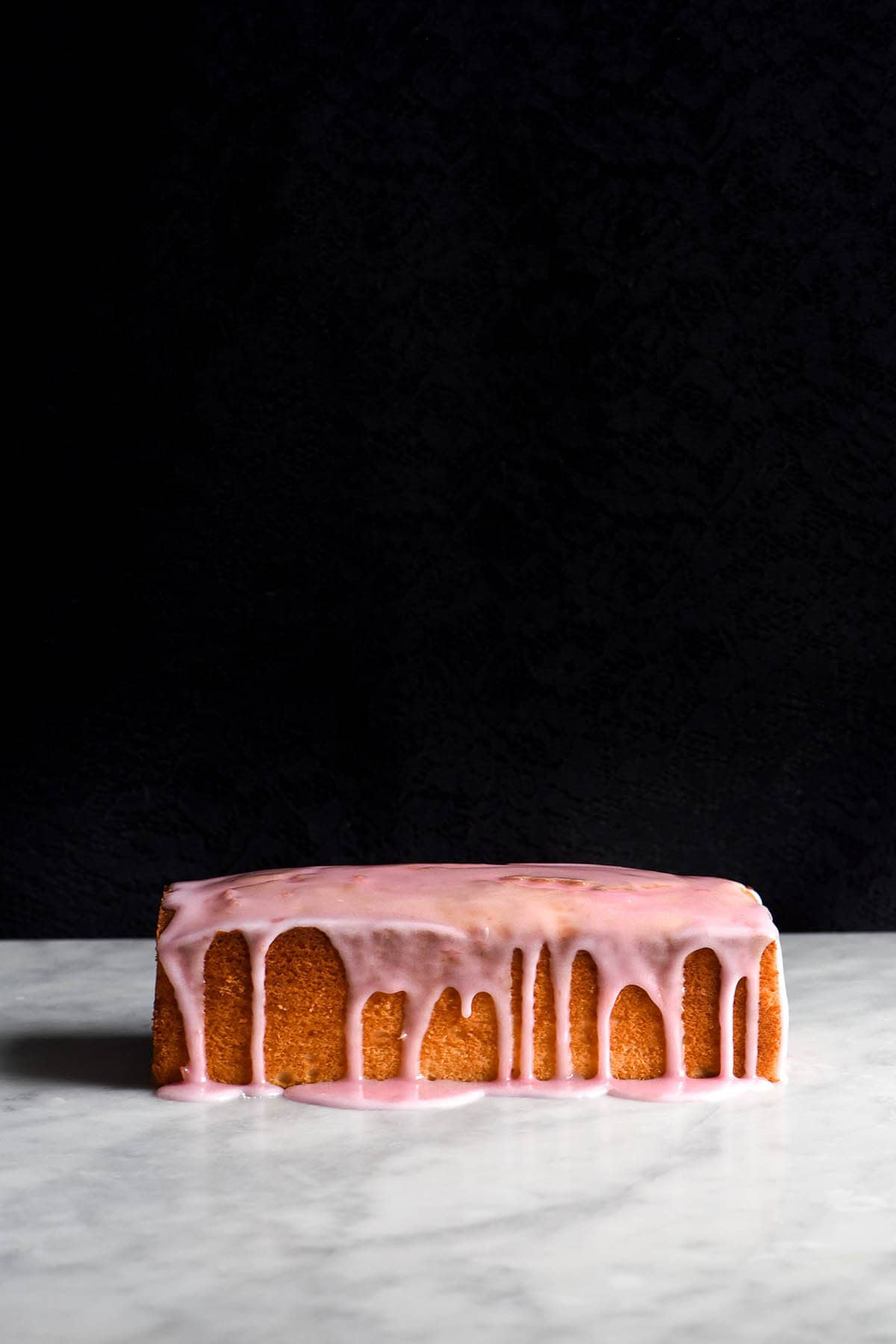
Recipe notes for your gluten free vanilla cake
This cake requires naught but two bowls and 5 minutes of your time to assemble. In one bowl, we make the buttermilk. In the other, we whisk together all the ingredients before transferring them to a lined cake tin to bake. Easy as that. Below are a few ingredients notes to get you on your way:
A fresh, good quality white rice flour is critically important to the success of this cake. See the white rice flour notes below for more information. At the moment, I have no substitute for the flour.
You can use any sort of milk for this cake – soy, lactose free, regular, etc. Oats and oat milk are not considered gluten free in Australia, which is why I don’t suggest it.
A neutral flavoured oil is important in this cake – I have used vegetable and sunflower.
Salt balances out the sweetness of the caster sugar and I don’t recommend omitting it.
On the note of the sugar, caster is all I have tried and suggest. I have no refined sugar free suggestions.
Vanilla and almond extract add a delightful complexity of flavour to this cake. Almond extract is a little niche (I have some for the almond croissants in my upcoming cookbook) but well worth the investment, if you find some. It is, however, completely optional.
I currently have no substitution suggestions for the eggs. I will test a vegan version of this cake, though, so stay tuned.
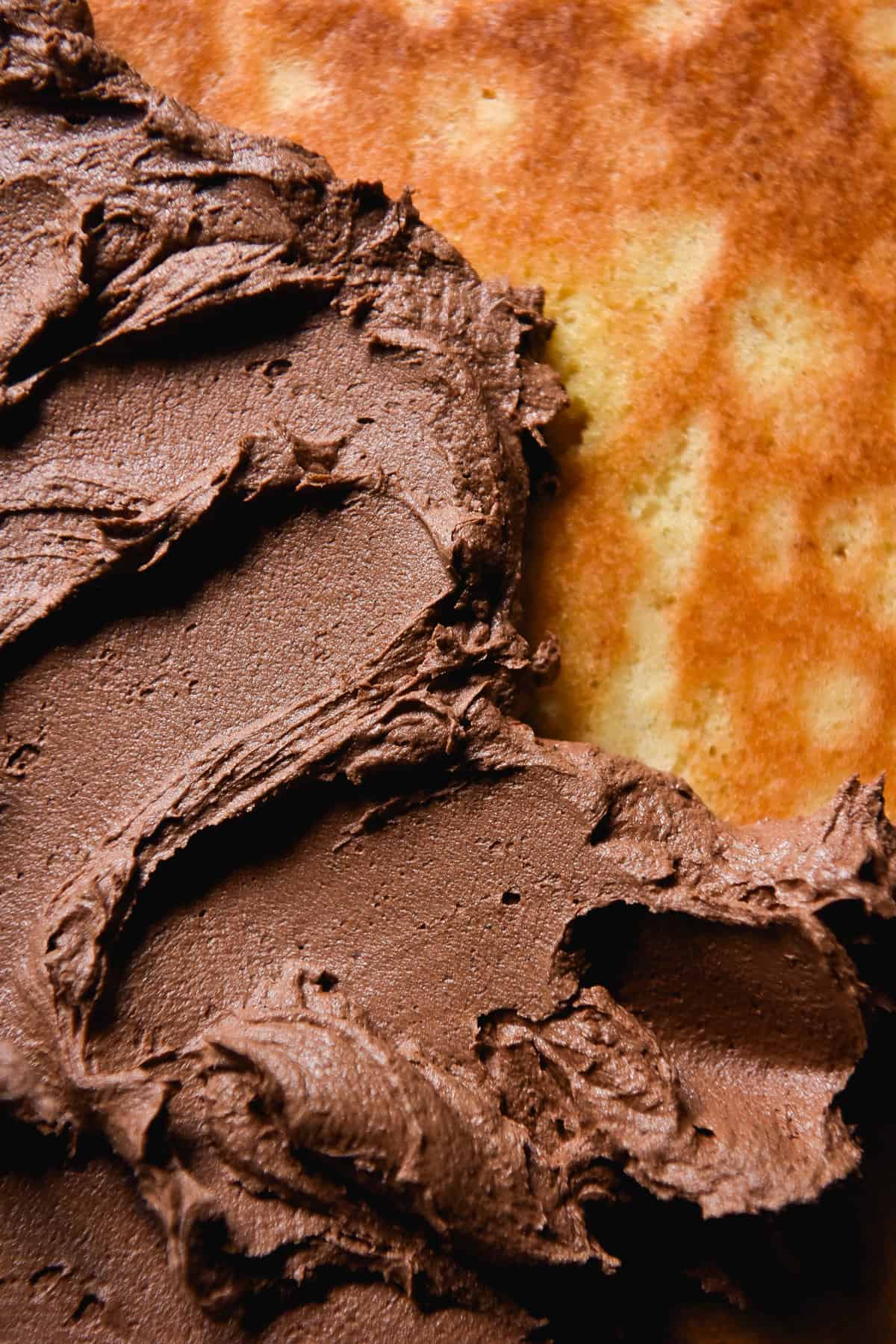
Tips for the white rice flour
You’ll know from my previous recipes that I love a single flour recipe, and I love using white rice flour. I have a few reasons for this: firstly, it’s easy to acquire and easily accessible. Secondly, when it’s a good quality batch, white rice flour can look and taste a lot like a regular baked good. I want to make gluten free baking as easy and doable as possible, so white rice flour works for the above two reasons.
There is, of course, a caveat! Stale, old white rice flour from the supermarket tastes like it smells. It’s a musty, floral sort of taste that immediately gives the game away and taints whatever it touches. In some baked goods, like a chocolate cake, you might be lucky enough to get away with it, hidden behind chocolate. But in this easy gluten-free vanilla cake, you have nowhere to hide.
Success of this cake, then, depends on buying a good quality and super fresh white rice flour. I always suggest buying at a bulk food store if you can – white rice flour seems to be quite a high turnover item so it will be fresh. It shouldn’t smell like much at all – maybe a subtle milky smell at the most.
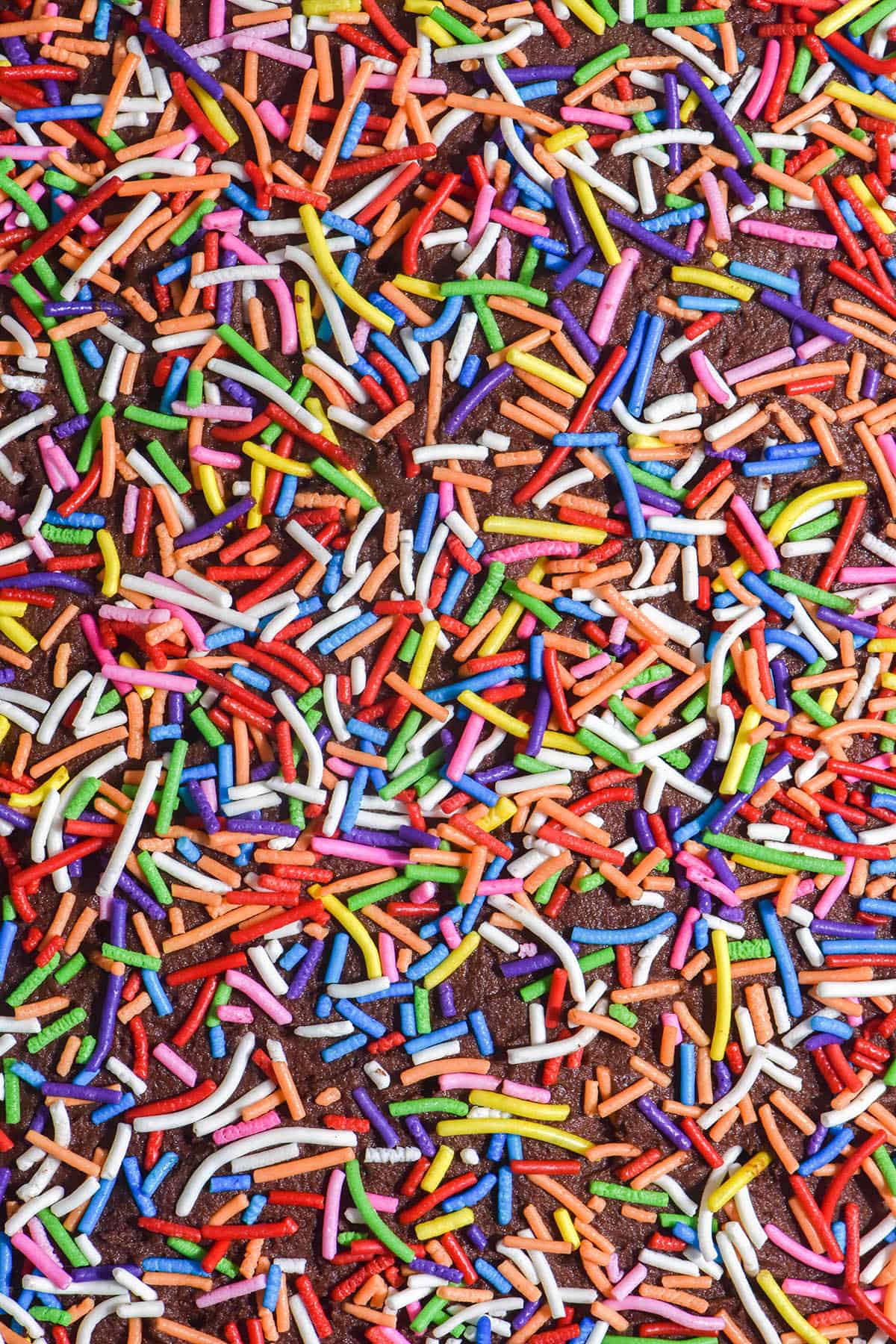
What sort of yoghurt can I use in this cake?
I tried to make this cake work without yoghurt. I really did. The fact of the matter, though, is a good full fat yoghurt makes this cake moist, fluffy and light. The versions that I tried with milk just weren’t the same. I am planning to develop a vegan version in the future, but for now this is where we are. I recommend a full fat plain yoghurt for this recipe. I love Jalna lactose free full cream pot set yoghurt. It’s thick, creamy, delicious and suitable for those with lactose issues.
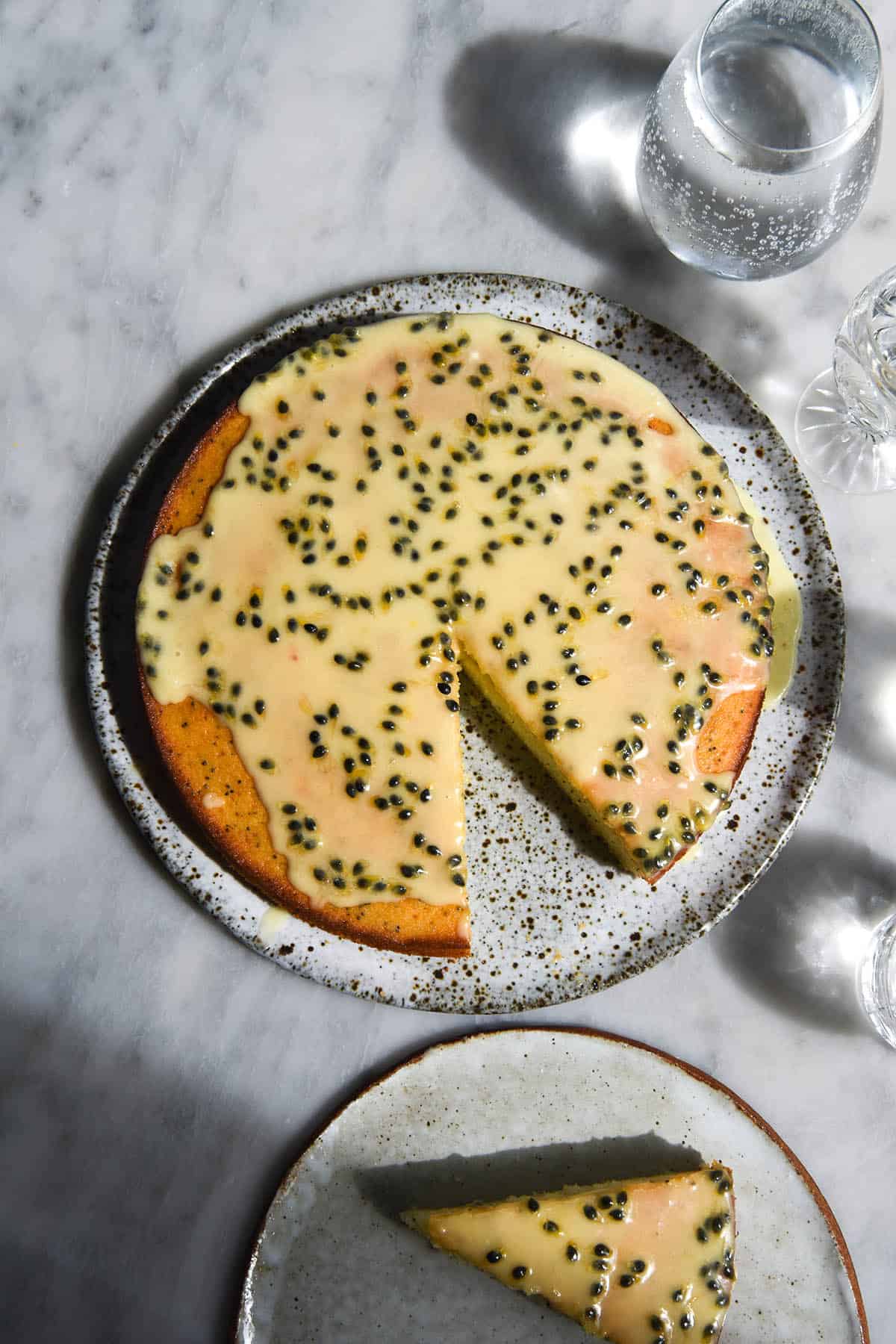
In the mood for gluten free cake? Try:
- My starchy flour and gum free funfetti cake
- This upside down blood orange cake (essentially a fruit topped version of this recipe)
- My favourite gal, this lemon drizzle drizzle
- This delicious carrot cake with cream cheese icing
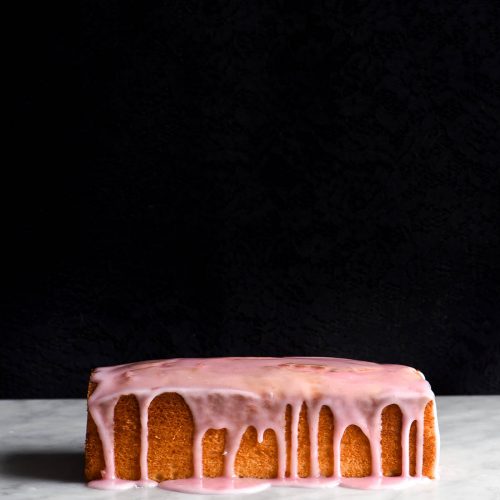
Gluten free vanilla cake
Equipment
- 1 x 20cm cake tin
Ingredients
- 175 g fine white rice flour
- 150 g caster sugar
- 1/2 teaspoon baking powder
- 1/2 teaspoon baking soda
- heaped 1/4 teaspoon fine salt
- 175 g plain full fat yoghurt I have used Greek and lactose free pot set yoghurt see notes
- 1/2 cup (125ml) milk of choice (I have used regular, lactose free and soy)
- 2 teaspoons white vinegar or lemon juice
- 1/3 cup (80ml) vegetable or sunflower oil
- 2 extra large eggs
- 1/4 teaspoon almond extract optional
- 1 teaspoon vanilla bean paste
Instructions
- Preheat the oven to 180C/356F. Lightly grease and line a 20cm cake tin.
- Combine the flour, sugar, baking powder, baking soda and salt in a large mixing bowl. Whisk to combine.
- In a smaller mixing bowl, whisk together the milk and yoghurt, then add the vinegar. The mixture should thicken almost straight away.
- Add the yoghurt mix, eggs and oil to the flour and whisk until completely smooth. Add the optional flavourings here, if you’re using them.
- Transfer the batter into the greased cake tin. Bake for 30-35 minutes or until the top is golden brown and a skewer comes out clean. The centre middle is the last to cook, so make sure you check it is done.
- Once cooked, allow to cool for 5-10 minutes before gently removing from the cake tin. You might need to run a knife around it first. Take the baking paper off and set on a cake rack to cool. Allow to cool completely if you’re icing.
- The cake keeps well for 2-3 days in an airtight container.

Hi!
How thick should the batter be? Mine was looking pretty runny, so I reduced the milk a little and added more rice flour.
I can’t have any dairy or sugar, so I substituted the yogurt for coconut yogurt (Cocojune) which is pretty thick, and used allulose 1:1 sweetener.
Hi Elena,
It should be a yoghurt consistency batter. What consistency would you say Cocojune is? I’ve had a look at their website but I couldn’t see much. Does it contain any xanthan gum or thickener?
I have never used allulose before (this is the first time I have heard of it!) so I’m not quite sure how that would affect your cake.
I also haven’t tested this recipe with a plant based yoghurt, so I’m guessing if there is an issue with consistency it will be to do with one of these factors.
I will try and develop a dairy free vanilla cake soon 🙂